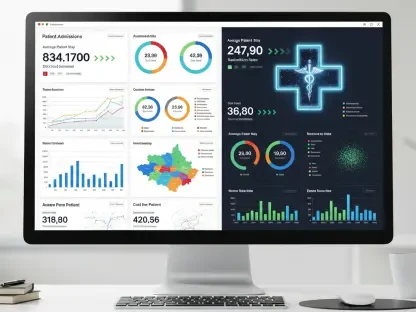As 2025 approaches, hospital leaders face a critical juncture that demands immediate and thoughtful action. Despite ongoing financial challenges, there are glimmers of improvement for some hospitals, making it crucial for leaders to prioritize strategic growth and adaptability. Analysts emphasize the importance of proactive planning to navigate the evolving healthcare landscape effectively. Embracing innovative solutions such as telehealth and artificial intelligence, while revisiting delayed capital projects, presents both challenges and opportunities for the healthcare sector. The consensus among industry experts is clear: a balanced and flexible approach is essential for success in the year ahead.
Embracing Proactive Strategies from Positions of Strength
Hospital leaders must adopt proactive strategies, leveraging their existing strengths to be effective. Anu Singh, managing director at Kaufman Hall, advises hospitals to explore growth options, including mergers and acquisitions. However, he notes that such paths may not be suitable for every hospital. Instead, he recommends focusing on improving revenues and expanding services through innovative solutions like telehealth and artificial intelligence (AI). These technologies can enhance patient care and streamline administrative processes, offering a competitive edge in the increasingly complex healthcare landscape.
The financial outlook for nonprofit hospitals shows modest improvement, with a median year-to-date operating margin of 2% as of November. However, this figure remains below the healthier range of 3% to 4%, presenting a mixed picture of financial recovery. In light of these financial realities, Singh urges healthcare leaders to craft bespoke strategies tailored to their unique circumstances. This involves defining core services, geographical focus, and strategic plans that enable execution through both organic growth and inorganic strategies, such as acquisitions and partnerships. Tailoring these strategies to the hospital’s unique context is essential for achieving sustainable growth.
Maintaining Agility and Continuous Reassessment
Agility is a cornerstone for success in the healthcare sector, and continuous reassessment is essential to stay competitive. Singh advises maintaining an agile approach by identifying “threshold levels” of performance or market changes that could necessitate strategic pivots. This continuous reassessment is crucial as the pace of transformation in the healthcare industry is rapid. By establishing clear gauges or indicators, hospitals can better track their progress and adapt their strategies accordingly. This allows for swift responses to both opportunities and challenges, ensuring that hospitals remain responsive and resilient in a dynamic environment.
Hal Andrews, CEO of Trilliant Health, underscores the importance of hospitals identifying and focusing on their areas of excellence while potentially divesting from less successful services. He articulates the need for hospitals to concentrate on a few core competencies, enhancing volume and performance in these areas rather than attempting to excel in all services. This targeted approach allows hospitals to allocate resources more efficiently, driving improvement in quality and patient outcomes. Additionally, it reduces the strain on hospital staff, leading to better retention and job satisfaction.
Rick Gundling, senior vice president of the Healthcare Financial Management Association, echoes the need for adaptability in responding to market changes. He identifies the health equity space and community health needs as significant opportunities for hospitals. By addressing these areas, hospitals can play a pivotal role in improving public health outcomes and fostering stronger community relationships. Gundling also emphasizes the growing importance of digital transformation, particularly the deployment of AI to streamline administrative processes and reduce bureaucratic burdens.
Leveraging Technology for Growth and Efficiency
The integration of technology, especially AI, is becoming increasingly vital for hospitals aiming to enhance growth and efficiency. By leveraging AI, hospitals can streamline administrative processes and reduce bureaucratic burdens, leading to significant cost savings and improved operational efficiency. This digital transformation is not just about adopting new technologies but also about rethinking how hospitals operate and deliver care. Embracing AI can improve decision-making processes, optimize resource allocation, and enhance patient care through predictive analytics and personalized treatment plans.
Telehealth remains a valuable tool for expanding hospital services and reaching patients who may not have easy access to in-person care. The COVID-19 pandemic accelerated the adoption of telehealth, and its continued use offers a way to provide timely and effective care to a broader patient base. By investing in telehealth infrastructure, hospitals can enhance their service offerings, improve patient outcomes, and reduce the burden on emergency services. Additionally, telehealth can serve as a critical component in delivering mental health services, ensuring comprehensive care for all patient needs.
Moreover, hospitals should not overlook the potential for revisiting capital projects that were postponed due to the COVID-19 pandemic. Suzie Desai, a credit analyst for S&P Global Ratings, notes that there is an increasing need for healthcare systems to address aging infrastructure. This suggests that there may be an uptick in spending on construction and improvement projects to modernize facilities. Updating infrastructure not only improves the patient experience but also ensures compliance with current health and safety standards, positioning hospitals to better handle future challenges.
Focusing on Core Competencies and Community Health
Hospitals must identify and focus on their areas of excellence while potentially divesting from less successful services. This approach allows hospitals to concentrate on a few core competencies, enhancing volume and performance in these areas. By doing so, hospitals can ensure they are providing the highest quality care in their strongest areas. Streamlining services can free up resources to invest in these core areas, leading to better patient outcomes and more efficient operations. It also helps build a strong reputation for excellence, attracting patients and top-tier medical professionals.
Community health needs and health equity are significant opportunities for hospitals. By addressing these areas, hospitals can play a vital role in improving public health outcomes and demonstrating their commitment to serving their communities. Effective communication of these efforts is crucial to building trust and engagement with the community. Transparency in initiatives and results can foster a strong connection with the community, driving collaborative efforts to address health disparities. Additionally, community-focused programs can serve as models for other hospitals, amplifying the impact of successful strategies.
Investing in digital transformation, particularly AI, can also play a role in addressing community health needs. By using AI to analyze data and identify trends, hospitals can better understand and respond to the health needs of their communities. This proactive approach can lead to more targeted and effective interventions. For instance, AI-powered tools can help in identifying at-risk populations and devising personalized care plans, thereby improving health outcomes and reducing hospital readmissions. This integration of technology in community health initiatives positions hospitals at the forefront of modern healthcare.
Revisiting and Investing in Capital Projects
As 2025 nears, hospital leaders are at a significant crossroads that necessitates immediate and careful decision-making. Although financial difficulties persist, some hospitals are seeing signs of recovery, making it essential for leaders to focus on strategic growth and adaptability. Experts stress the importance of proactive planning to successfully navigate the changing healthcare landscape. Implementing innovative solutions like telehealth and artificial intelligence, along with reassessing delayed capital projects, presents both challenges and opportunities for the healthcare industry. According to industry experts, a balanced, flexible approach is vital for success in the coming year. Maintaining financial health while investing in these innovations will be crucial. Collaboration among departments and a focus on patient-centric care will further bolster efforts. Additionally, keeping an eye on regulatory changes and preparing for potential disruptions will help hospitals stay resilient. The consensus is clear: healthcare leaders must be adaptable, innovative, and forward-thinking to thrive in 2024.









